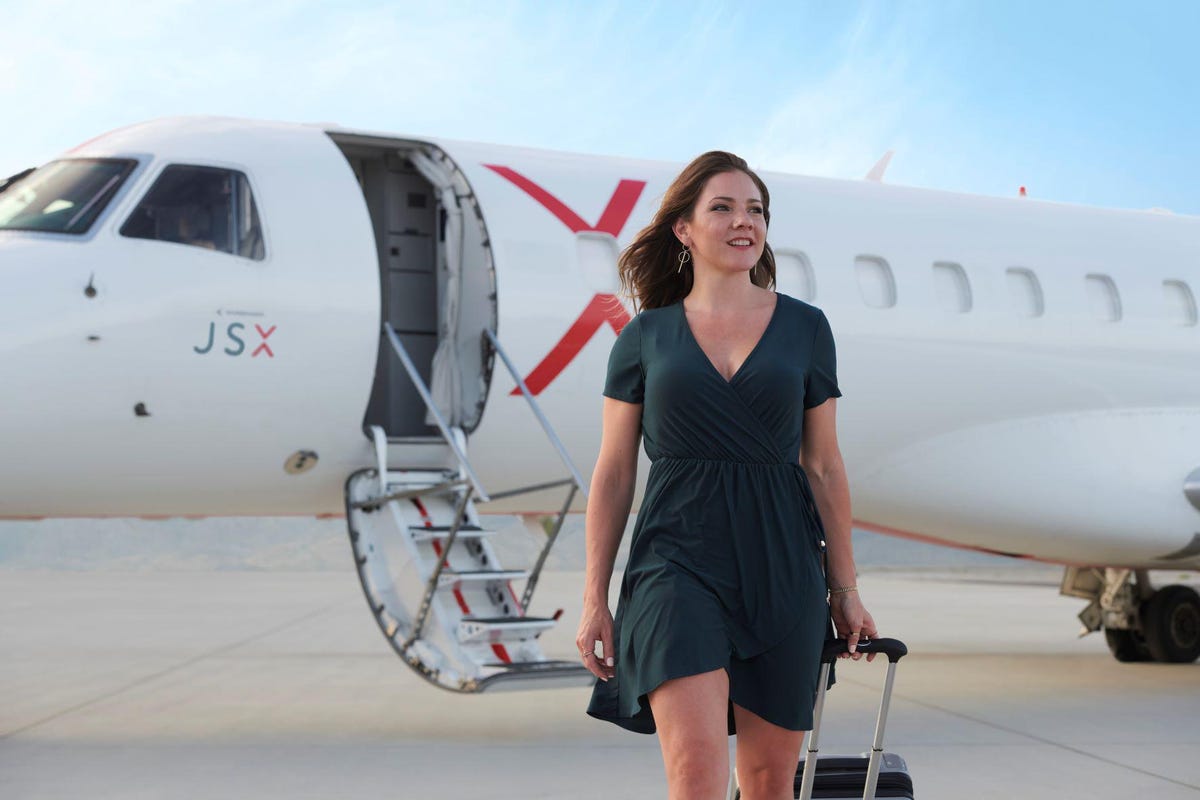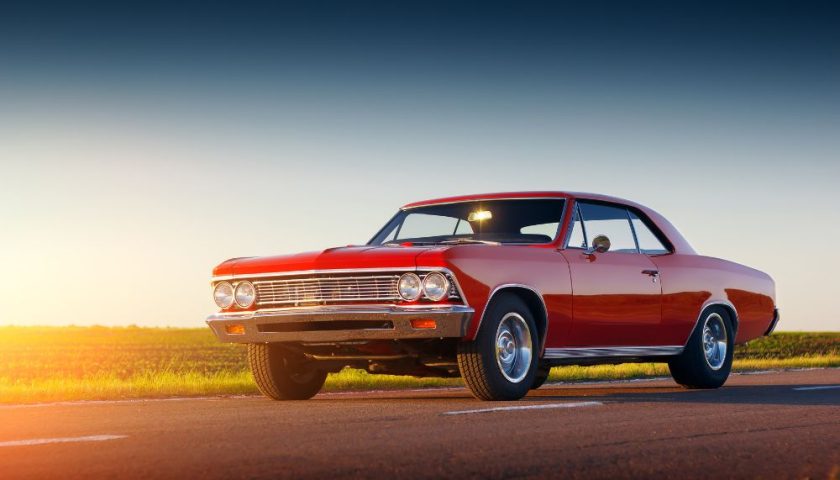With JSX, travelers bypass the airport chaos plaguing air travel today.
JSX
Semi-private jet travel is the Goldilocks option: a bit pricier than flying commercial, but far cheaper than hiring a private jet. The best part? No airport chaos.
Every day for weeks now, airports around the world have been tallying upwards of 20,000 flight delays and 2,500 cancellations, according to FlightAware tracking data. Headlines tell of lost luggage and long queues. Experts say this will be the new normal for some time to come.
Sunday was a typical weekend travel day this summer, as 17 major U.S. airports saw at least 20% of their flights delayed. The worst offenders were Charlotte/Douglas International Airport and Las Vegas’s Harry Reid International Airport, where 38% and 32% of all flights, respectively, departed late.
It’s not surprising, given the hassles of flying these days, that many travelers would be looking for an easier way to get from A to B.
For a growing number of them, semi-private jet travel has emerged as the Goldilocks option, the “just right” alternative that takes the best part of private travel experience — being able to bypass crowded airport terminals and show up 20 minutes before departure — and offers point-to-point flights for a lot less than travelers might have imagined.
Rather than fly with 180 other passengers on, say, an Airbus A320 or a Boeing 737, going semi-private means sharing the cost of a private jet with up to 30 passengers. Each company in the semi-private space operates differently, so the price and experience can vary quite drastically. Some companies have a subscription model, while others simply charge per flight.
“People either assume they’ve got to fly on a major carrier for a few hundred dollars, or they’ve got to take a private jet for tens of thousands of dollars. Historically, there hasn’t been anything in between, and that’s where we come in,” says Alex Wilcox, CEO of JSX, an innovative airline offering “hop-on” semi-private service on 30-seat Embraer jets for as little as $199 each way.
“What if we could provide a private jet ground experience at a commercial price point? That’s how we came up with JSX.”
JSX launched in 2016 and, like every other airline big and small, saw its business collapse in the early days of the pandemic. But it has seen a quicker, more robust recovery than larger airlines, doubling its fleet size every year and adding a slew of new routes including, beginning mid-August, twice-daily service between Phoenix and San Diego. While JSX’s largest hubs are in the Southwest, the airline has expanded to the East Coast, including service between New York’s Westchester County and Miami.
In this summer of airport chaos, the JSX experience delivers obvious appeal. No need to arrive at the airport several hours early. Private terminals with no crowds. Business class legroom. Free snacks and drinks. Two free checked bags. Contactless check-in.
While semi-private air travel has been around on a smaller scale for years, Wilcox says JSX is the first brand to try to do it on a national scale. “This is a relatively new space,” he says. “And so, a lack of awareness is probably our number one problem.”
But make no mistake; awareness is growing. During the Covid-19 pandemic, more travelers discovered the upside of sidestepping the major airlines. “Since 2019, private and semi-private aviation has grown 22% in terms of how many flights we’re seeing,” says Kathleen Bangs, spokesperson for FlightAware and a former commercial airline pilot.
JSX flies Embraer jets that seat up to 30 passengers.
JSX
“During Covid, a lot of people didn’t want to travel commercially, just out of fear of exposure,” adds Mark Baier, CEO of AviationManuals, a leading provider of aviation development manual services and safety management system software. “And recently a lot of people are traveling privately because of the complications of commercial air travel right now.”
“We definitely saw an influx of new customers during Covid,” says Wilcox. “And now I think there is a new willingness to look at alternative ways of getting from point A to point B.”
The difference today, he says, is that growth is no longer driven by concern for physical health. “Now, it’s actually about mental health.”
Because JSX flies in and out of private terminals, passengers can go straight from their car to the plane. “Historically, private terminals have been reserved for the ultra-rich flying in private jets. We found a way to get to get up to 30 people to be able to share a private jet, and thereby make it much more accessible,” says Wilcox.
Beyond having more ample legroom and no threat of getting stuck the dreaded middle seat, the in-air semi-private experience is much like on any other commercial airline. “When you look across all commercial transportation, the standards, the training, the safety requirements are really uniform across the board,” says Baier. “So there’s no need to worry that with a nontraditional carrier, that safety and training standards are going to be different.”
“The airplanes all go the same speed at the same altitude,” agrees Wilcox. “The big difference is that passengers see real time saving because we’re in those private terminals.”
With travelers showing a willingness to give alternative airlines a try, Wilcox sees boom times ahead. “The Northeast is our most fertile ground for growth,” he says. “It’s also the most challenging airspace in the world. But to me, that’s all the more opportunity for passengers to get away from massive mega hub airports and into the small community airports.”





